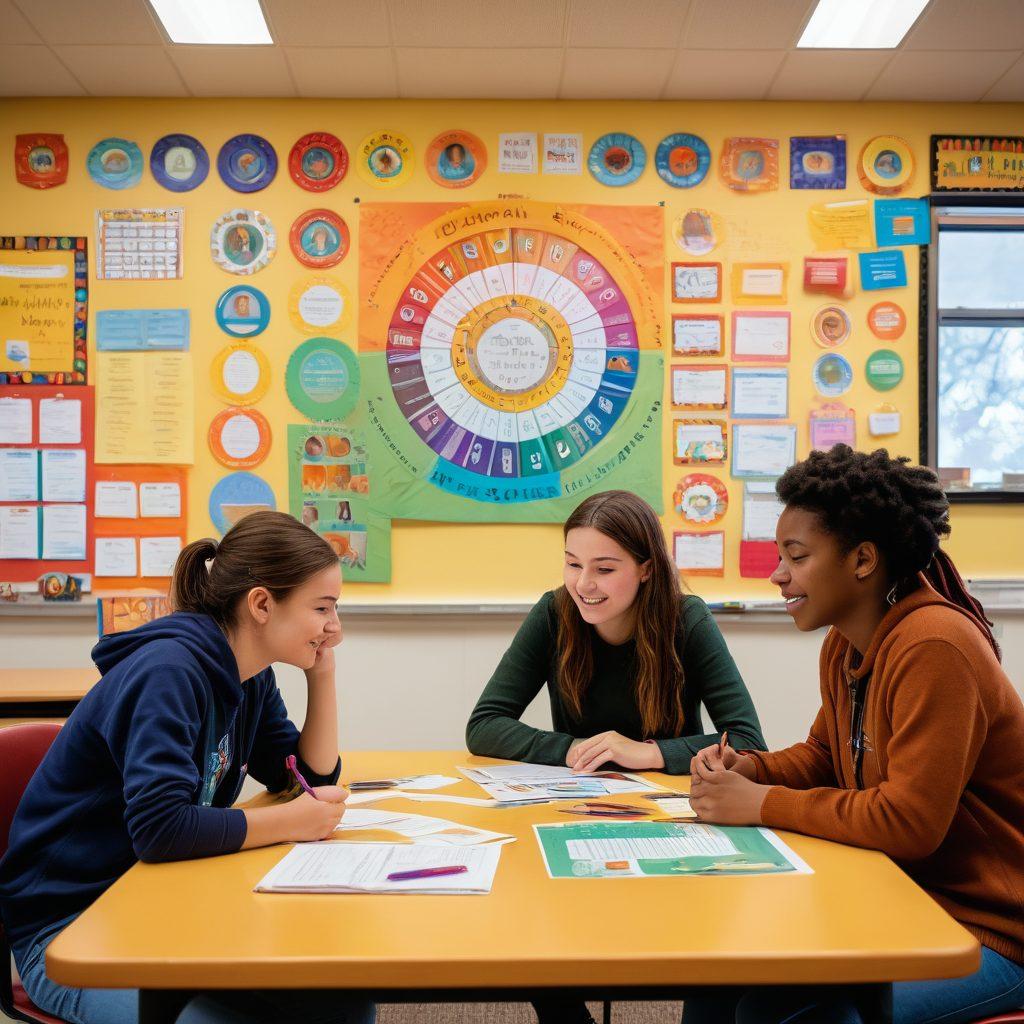Navigating the Challenges of Sadness in Education: Strategies for Students and Teachers
In a world where sadness can weigh heavily on the hearts of students and teachers alike, the role of education should pivot to embrace not just academic achievement, but emotional well-being too. How can we empower students to rise above their sadness in learning? By adopting effective pedagogical strategies, educators can create a nurturing environment that not only promotes academic excellence but also fosters a vibrant school community. Picture a cp school where joy, curiosity, and resilience blend seamlessly into the educational curriculum—sounds blissful, right?
The reality is that many students experience setbacks, anxiety, and sadness that stifle their learning. But what if the classroom could be a sanctuary, a place where students don’t just learn but thrive? Teachers hold the key. Engaging with students through dynamic classroom activities can spark interest even in the most reluctant learners. Consider incorporating interactive educational tools that invite student participation and collaboration. What if a science lesson was transformed into a lively experiment where students learn through doing? Imagine their excitement and the invaluable academic support they receive in the process!
Our educational landscape is painted with an array of opportunities for student engagement that extend beyond traditional teaching methods. Programs like after-school activities and enrichment opportunities not only provide academic resources but also create spaces for students to build friendships and find support networks. Thus, these scholastic programs can serve as lifelines, reminding students that they are not alone in their struggles. As we ask ourselves, how can we cultivate an enriching school culture and help students feel connected? The answer lies in inclusivity and support from the broader school community.
Additionally, the importance of parent-teacher collaboration cannot be overstated. This partnership augments the understanding of a child's emotional and academic needs. For instance, organizing workshops for parents on child development can equip them with the tools to support their children effectively. How can teachers enact strategies that equip parents to reinforce what’s taught in the classroom? By providing learning resources and study materials that parents can easily utilize, we open doors to improved academic outcomes and emotional wellness.
Lastly, online learning presents a new frontier for implementing such strategies. With the right teacher training and assessment strategies, educators can leverage digital platforms to provide tailored academic support to students. Imagine a virtual world where learning is adaptable and responsive to each student's unique needs! Innovative curriculum design, infused with emotional intelligence, can exist in both physical and virtual classrooms. As we journey through sadness together, let’s reflect on our role in shaping a brighter future for our students, one filled with empathy, understanding, and success.
Building Resilience: Integrating Emotional Support into Educational Curriculum
In the intricate tapestry of education, moments of sadness can often be overshadowed by the pressures of academic performance and a relentless pursuit of success. Yet, these emotions are as intrinsic to the educational experience as math equations and literary analyses. When students feel sad, they might withdraw from learning, disengage from classroom activities, and struggle to reach their full potential. This presents a formidable challenge for educators whose primary goal is to foster an enriching and supportive school community. How can teachers and students navigate this emotional landscape? The answer lies in building resilience by integrating emotional support into the educational curriculum.
Imagine walking into a classroom where the atmosphere is thick with apprehension and despair. It's not uncommon to find students feeling overwhelmed by academic demands, peer relationships, or personal challenges. According to child development experts, acknowledging and addressing these feelings is crucial in promoting resilience. Schools adopting strategies for emotional support, such as mindfulness practices or incorporating stories of perseverance into their curriculums, empower students to recognize their emotions as valid and manageable. By including activities that encourage students to express feelings, educators can create a safe space for discussion and healing.
Building resilience is not a solitary endeavor; it is a collaborative effort that involves the entire school community. Engaging parents through positive avenues like parent-teacher collaboration can significantly impact student engagement and success. Initiatives that involve families in enrichment opportunities outside the traditional educational framework—such as after-school activities or community service programs—foster accountability and support systems for students. Could schools better integrate these programs to create a more well-rounded educational experience? When families, educators, and students share the same goals, the collective resilience of the community is strengthened.
The evolution of the educational curriculum must include a focus on emotional intelligence alongside academic content. Pedagogy that embraces emotional support strategies equips students with life skills that extend beyond classroom learning. For instance, implementing educational tools that address mental health—like interactive online learning platforms or dedicated academic resources—ensures that emotional well-being is valued equally with academic success. By prioritizing action-based assessment strategies and tailoring instructional methods, teachers can promote a deeper understanding of emotional health while also boosting academic performance.
Ultimately, the journey towards integrating emotional support into the education system starts with teachers themselves. Teacher training programs that highlight the importance of mental health and emotional resilience prepare educators to better understand and respond to their students' needs. As educators cultivate these skills, they inspire their students to adopt similar practices. This cycle of support not only benefits students in their academic pursuits but also lays the foundation for lifelong resilience against the challenges life may throw their way. By embracing a curriculum that nurtures both the mind and the heart, the education system can empower students to thrive not just academically, but holistically.
Collaboration is Key: Strengthening the School Community for Student Well-being
In the realm of education, sadness among students is a reality that many teachers and parents face. Whether it's due to personal challenges, academic stress, or social dynamics, students can often feel overwhelmed. But what if we could turn that sadness into a powerful force for growth? In order to tackle these challenges head-on, collaboration within the school community is essential. A united effort among teachers, students, and parents can create a nurturing environment, fostering emotional well-being while enhancing educational experiences. After all, as the saying goes, 'It takes a village to raise a child.' So, how can we strengthen this community to support our students better?
Creating a thriving school environment requires open communication and collaboration among all parties involved in a child's education. Teachers can benefit from sharing their experiences and findings on effective teaching pedagogy, while parents can offer insight into their children's behaviors and challenges at home. This collaboration can lead to innovative school programs that address students' emotional and academic needs, creating a robust support system. Imagine a workshop where teachers and parents jointly brainstorm educational tools and enrichment opportunities, sharing best practices to help students succeed. By working together, we can build a more resilient academic support network.
Students are not just passive recipients of knowledge; they are active participants in their learning journey. Engaging them through classroom activities that foster social connections and emotional intelligence is critical for their well-being. Schools should prioritize integrating social-emotional learning into their curriculum, thereby equipping students with the skills to navigate sadness and challenges effectively. Furthermore, creating after-school activities and other scholastic programs that promote teamwork and camaraderie can provide students with essential peer support. How can we ensure that these activities are designed with the student’s emotional and academic wellness in mind?
Parent-teacher collaboration is another pillar of a strong school community. Schools can organize regular meetings and workshops that allow parents and teachers to share insights and concerns about student development. This partnership can significantly influence a child's learning experience, leading to enhanced student engagement and a more supportive atmosphere at school. Additionally, academic resources can be tailored to meet specific community needs by incorporating feedback from both parents and teachers. Wouldn’t it be wonderful to see a thriving school partnership that directly impacts student performance and emotional well-being?
Lastly, incorporating technology, such as online learning platforms and educational resources, into the traditional schooling process can enhance both student engagement and teacher training. Virtual environments can offer flexibility, enabling students to access study materials that cater to their individual learning styles. Furthermore, many online platforms offer tools to assess student progress, allowing educators to adapt their pedagogical methods to better serve their students’ needs. The use of technology is a fantastic opportunity to strengthen our school communities, enriching the educational landscape in ways we've only begun to imagine. Creating a culture that values collaboration can truly transform how we approach teaching and nurture child development, bringing hope even amidst sadness.


